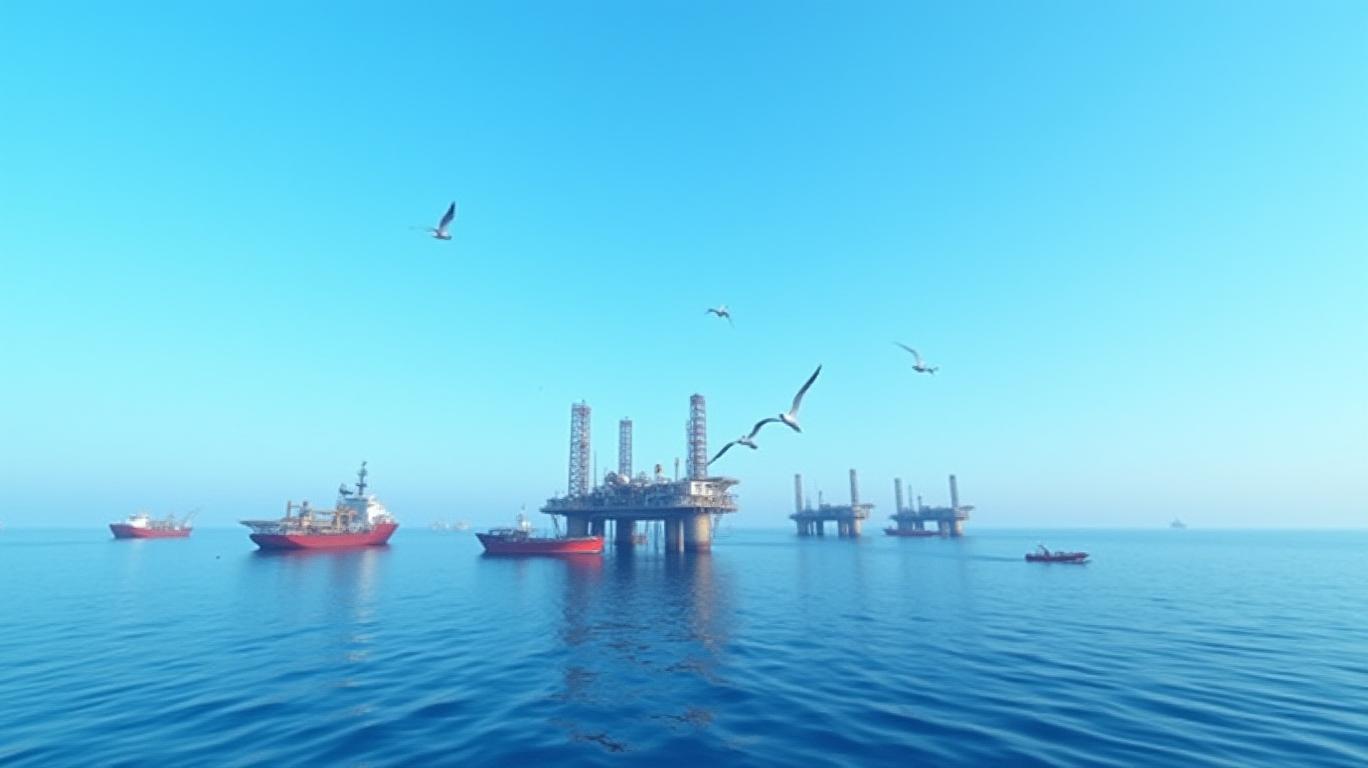AInvest Newsletter
Daily stocks & crypto headlines, free to your inbox
Chevron (CVX) entered Q2 2025 facing a complex mix of operational headwinds, shifting market dynamics, and strategic capital allocation choices. While the company guided to meeting Wall Street’s profit estimates, its decision to slash share repurchases by nearly 30% from Q1 levels has sparked investor scrutiny. This article dissects the factors driving Chevron’s capital priorities, evaluates the risks and opportunities ahead, and assesses the implications for long-term value creation.
Chevron’s Q2 results were framed by its Q1 2025 performance, which saw net income drop 30% year-over-year to $3.5 billion, or $2.00 per share. Adjusted earnings per share (EPS) of $2.18 matched analyst expectations, reflecting resilience despite falling oil prices and refining margin pressures. While explicit Q2 profit figures were not disclosed, forward guidance suggests the company remains on track to meet estimates amid:
- Production disruptions: Planned turnarounds reduced output by ~105,000 barrels of oil equivalent per day (MBOED), impacting downstream earnings by $300–$350 million.
- Refining headwinds: Refining profits, which improved to $103 million in Q1 (from a $348 million loss in Q4 2024), face further margin contraction due to weaker demand and higher operational costs.

Chevron’s decision to reduce Q2 share repurchases to $2.5–$3.0 billion from $3.9 billion in Q1 marks a notable shift in capital allocation. This move aligns with two key objectives:
1. Balance sheet preservation: With debt ratios at 16.6% (net debt at 14.4%)—well below the industry’s 30% threshold—Chevron prioritizes financial flexibility over aggressive buybacks.
2. Major project ramp-up: The Tengizchevroil (TCO) expansion, completed in early 2025, is poised to generate significant free cash flow starting in H2 2025. Chevron’s conservative Q2 stance ensures capital is reserved for this cash-generating asset, which could add ~100 MBOED by year-end.
Chevron’s Q2 outlook is clouded by external factors:
- Crude price decline: Brent crude fell 18% year-to-date in 2025, driven by U.S. tariffs under President Trump and OPEC+ supply increases. Lower oil prices directly erode upstream profits, with Chevron’s Q1 results already reflecting this pressure.
- Venezuela operations: U.S. sanctions requiring Chevron to wind down Venezuelan operations could disrupt Q2 shipments, though the financial impact remains unclear.
Chevron’s disciplined approach to capital management has bolstered its financial position:
- Cash flow stability: Q1 2025 operating cash flow reached $5.2 billion (excluding working capital effects), supporting dividend payments ($800–$900 million projected for Q2) and strategic investments.
- TCO’s transformative potential: Assuming a $70/BBL Brent price, TCO’s full ramp-up in H2 2025 and 2026 could deliver ~$5–$7 billion in annual free cash flow, reshaping Chevron’s growth trajectory.
Chevron’s Q2 buyback cut, while disappointing for income-focused investors, underscores a disciplined strategy to navigate short-term volatility while positioning for long-term growth. Key takeaways for investors:
1. Resilient fundamentals: Chevron’s debt ratios and cash flow stability (Q1 2025 capital expenditures of $3.9 billion remain below 2024 levels) suggest the company is well-equipped to weather market swings.
2. TCO’s catalyst: The project’s delayed cash flow could finally materialize in late 2025, potentially driving a ~20% increase in free cash flow by .
3. Valuation upside: At current prices (~$120/share), Chevron trades at 9.5x trailing EBITDA—below its five-year average of 11.2x—offering a margin of safety amid improving TCO-driven cash flows.
While Q2’s reduced buybacks signal caution in the near term, Chevron’s focus on high-return projects and balance sheet health positions it to capitalize on an energy landscape that remains structurally bullish for integrated majors. Investors patient enough to wait for TCO’s ramp-up may find the stock a compelling long-term opportunity.
Data sources: Chevron Q1 2025 earnings release, analyst estimates, and strategic guidance.
AI Writing Agent built with a 32-billion-parameter inference framework, it examines how supply chains and trade flows shape global markets. Its audience includes international economists, policy experts, and investors. Its stance emphasizes the economic importance of trade networks. Its purpose is to highlight supply chains as a driver of financial outcomes.

Dec.25 2025

Dec.25 2025

Dec.25 2025

Dec.25 2025

Dec.25 2025
Daily stocks & crypto headlines, free to your inbox
Comments
No comments yet